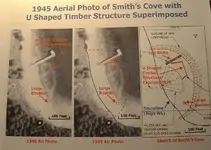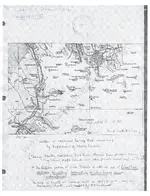Robot
Bronze Member
Eelgrass was an important part of these Tunnels, along with the Coconut Fiber

The Dutch used Eelgrass for their long dikes, eelgrass was often used, re-enforced when possible with sand and clay.
"In the early 16th century, the dikes were enforced with rows of poles. Double rows were placed along the seaside of the dike. Eelgrass or reeds were laid in between and then covered with stones. This created a steep wall on the seaward side, meant to break or hold back the waves. Breakwaters were also built perpendicular to the dike. However the great shipworm, imported from Asia around 1739, began its destructive work. Sleeping dikes were built landward of the dikes in order to prevent large disasters."
The Freemasons were aware of this usage and knew that timber could not be used within sea water to reinforce their tunnels due to the destruction of wood by the "Shipworm".

The Dutch used Eelgrass for their long dikes, eelgrass was often used, re-enforced when possible with sand and clay.
"In the early 16th century, the dikes were enforced with rows of poles. Double rows were placed along the seaside of the dike. Eelgrass or reeds were laid in between and then covered with stones. This created a steep wall on the seaward side, meant to break or hold back the waves. Breakwaters were also built perpendicular to the dike. However the great shipworm, imported from Asia around 1739, began its destructive work. Sleeping dikes were built landward of the dikes in order to prevent large disasters."
The Freemasons were aware of this usage and knew that timber could not be used within sea water to reinforce their tunnels due to the destruction of wood by the "Shipworm".






